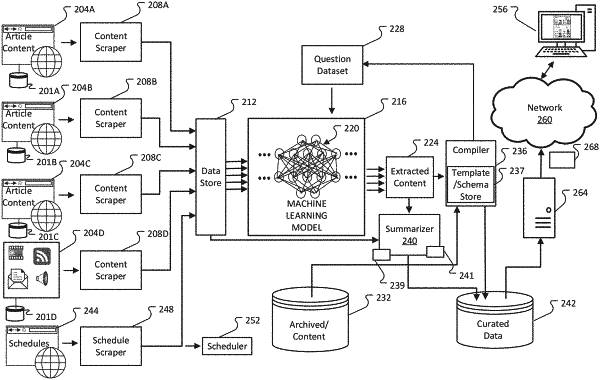| CPC G06F 16/345 (2019.01) [G06F 3/0482 (2013.01); G06F 16/951 (2019.01); G06F 18/214 (2023.01); G06F 40/295 (2020.01); G06N 20/00 (2019.01)] | 18 Claims |

|
1. A method for generating structured content for an event, comprising:
obtaining a plurality of information items from a plurality of data sources, each information item including unstructured content about the event;
providing the plurality of information items to a trained machine learning model, wherein the model is trained with training data that includes information items and corresponding labeled entities for a plurality of historical events;
receiving a formatted request, wherein the formatted request is associated with one or more labeled entities associated with the trained machine learning model;
identifying, by the trained machine learning model, multiple entities from the unstructured content based on the formatted request associated with the one or more labeled entities;
combining the plurality of information items associated with an identified entity of the multiple identified entities into a summary information item;
splitting the summary information item into a plurality of text segments;
assembling one or more text segments of the plurality of text segments to generate a summary of the plurality of information items associated with the identified entity;
storing each identified entity of the identified multiple entities and the generated summary as structured content responsive to the formatted request when a number of matching identified entities for each identified entity of the identified multiple entities exceeds a threshold; and
including the structured content in a search index.
|